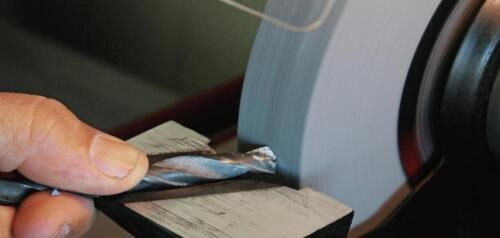When it comes to manufacturing, abrasives are essential tools that are used for a variety of tasks, including cutting, grinding, polishing, and finishing. Two common types of abrasives that are used in manufacturing are coated and bonded abrasives. Although both types of abrasives are designed to achieve similar results, they have distinct differences in terms of their composition, properties, and applications. In this blog post, we'll take a closer look at the differences between coated and bonded abrasives for manufacturing.
Coated Abrasives
Coated abrasives are made by bonding abrasive grains to a flexible backing material using adhesives. The abrasive grains can be made of a variety of materials, including aluminum oxide, silicon carbide, and diamond. The backing material can be made of paper, cloth, or polyester film.

Coated abrasives have several advantages over bonded abrasives. One of the main advantages is that they are more flexible, which allows them to conform to the shape of the workpiece being machined. This makes them ideal for sanding and finishing curved surfaces. Coated abrasives are also more durable than bonded abrasives, which means they can be used for longer periods before needing to be replaced.
Another advantage of coated abrasives is that they are available in a wide range of grit sizes, which allows them to be used for a variety of applications. Coarse grits are used for heavy material removal, while finer grits are used for finishing and polishing.
However, coated abrasives also have some disadvantages. One of the main disadvantages is that they tend to generate more heat during use, which can cause the workpiece to become discolored or warped. Coated abrasives are also more prone to clogging, which can reduce their effectiveness.
Bonded Abrasives
Bonded abrasives are made by mixing abrasive grains with a bonding agent, such as resin, clay, or rubber, and then shaping the mixture into the desired form using a mold. The resulting product is a hard, dense abrasive tool that can be used for cutting, grinding, and finishing.
Bonded abrasives have several advantages over coated abrasives. One of the main advantages is that they are more rigid, which allows them to be used for more aggressive material removal. Bonded abrasives also generate less heat than coated abrasives, which reduces the risk of damage to the workpiece.
Another advantage of bonded abrasives is that they are more resistant to clogging, which means they can be used for longer periods before needing to be cleaned or replaced. Bonded abrasives can also less expensive than coated abrasives, which makes them a more economical choice for some applications.

Conclusion
In conclusion, both coated and bonded abrasives have their advantages and disadvantages, and choosing the right type of abrasive for a particular application depends on several factors, including the material being machined, the desired finish, and the level of precision required. Coated abrasives are more flexible and versatile, while bonded abrasives are more rigid and aggressive. Ultimately, the choice between coated and bonded abrasives comes down to the specific needs of the manufacturing process.
At Butler Bros., we represent a full line of coated and bonded abrasives manufacturers such as Norton, 3M, Sia, VSM, Weiler and more! Please be on the lookout for future articles with more “in-depth” techniques regarding abrasives and techniques. In the meantime, please feel free to contact your local Butler Bros. sales representative for assistance on product and techniques for abrasives. If you’d like to find out who your local representative is, please email your company name and location to sales@butlerbros.com and ask for the contact info of the local Butler Bros. representative in the area. Or please give us a call at 888-784-6875 and our staff will point you in the right direction.

Comments